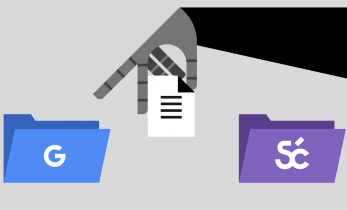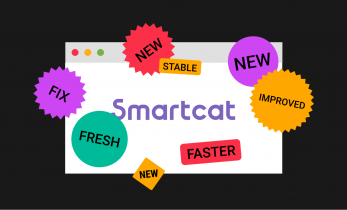Greater than 2 minutes, my friend!
Translating without a keyboard. Results of my little Speech-To-Text based translation experiment.
Two of my kids have dyslexia. A couple of years ago the school suggested my son should try to get help from a text-to-speech/speech-to-text tool (Kurzweil if I remember correctly).
The installation and the usage was not that kid-friendly, so I started to look into the software. I was pretty impressed. I could talk and the tool did write down in almost perfect Dutch, with zero typos, what I was dictating.
So I started to use that tool while translating and I could immediately feel the nature of the job had changed. I learned that I basically tend to think with my fingers, not with my mouth. I cannot describe the change any better. But I somehow had the feeling I was at least as productive, and my sentences sounded better.
Despite this positive feeling, I decided NOT to work like this, for several reasons:
- I had become my own full-time reviewer. My translations were going smoothly if I had clear sentences in my head and if I did not change my mind about them. But as soon as I wanted to edit my own speech-to-text, I had to use a keyboard anyhow. That being said: I could drop the keyboard if I wanted to, but I needed my mouse twice as much.
- The speech-to-text software wasn’t integrated in my CAT, so I had to use the mouse to change segments, to start recording… I ended up integrating the two, but it never paid off. When you start a development like this, you move one ping-pong ball from a pile, and before you know you’re moving the whole pile.
- I got frustrated the dictionary (aka terminology list) I was using for translation, was not linked in any way to the dictionary the speech-to-text tool was using.
- Working in IT most of the stuff I had to translate contained words that we do not translate in Dutch. Unlike the French we don’t have our own words for every English word. A PC is a PC, a computer is a computer. There are too many words for which the closest soundex match was found, so I ended up fixing those all the time. The fact the auto-propagate did not step in and solved this, disappointed me a lot.
- The speech-to-text software, I guess, had been trained on recognizing Dutch speech. My Flemish soft “G” too often mislead the software, sometimes resulting in funny near matches.
- A last frustration, one for the road: I wanted to use speech-to-text for editing pre-translated output, and the speech-to-text software was not using the words in the sentence that were there. So I saw the right words, and the pre-translation was helpful to me, but NOT to the speech-to-text tool. I could not simply change word order. The sentence was rewritten from scratch as if there had been no pre-translation at all.
This experiment I did about 5 years ago. Now my daughter came home with even better software. I wonder if I should give it another try.
Has someone had other & better experience with this kind of technology? Does someone know a translation tool that has built-in text-to-speech technology?
Photo Credits: Camille Kimberly (Sorry I could not resist to add the microphone icon)





Very good. Maybe, in a near future we would be called as “TRANSTEPRET”. lol. Sorry this bad joke.
Hi Gert,
your experience sounds very much like my own with Windows built-in speech-to-text tool. It worked fine during the tutorial (just need a good mic) but it was a nightmare to use with CAT tools. As I translate IT manuals, help files, etc., for every sentence starting with “Sélectionnez/Sélectionner”, the software would literally select something instead of writing it down.
I never used it again and now I am in an open space co-working office. People would hate me if I talk to my computer all day.
I don’t think there are CAT tools with built-in text-to-speech but I have heard of Dragon Naturally Speaking and TextAloud, the latest being less expensive. Speech-to-text/text-to-speech could be a nice feature for future CAT tools.
Super interesting article and comments. I have often thought of testing dictation , but we also have an open office which could be very annoying. Before the days of PCs, thirty odd years ago, dictation was used by many translators after which a transcriptionist would type the audio. The typist would return the document back to the translator for corrections. There was definitely an art to dictation. Today, as mentioned above , adding in the technical aspects of CAT tools adds another layer of difficulty.
There is some hard data here.
link to ddd.uab.cat
One great hint here : for those who translate in open space offices and don’t like that, start working with speech-to-text and request your own private cubicle. 🙂
Hi Gert, thanks for your post, Several years ago I tried to install a software called Dragon Natural Speaking to increase my output. In those days I remembered how the translators teams at FAO used to work, the same as mentioned by Kim Pines. Unfortunately for me there was no chance as I’m bilingual and I translate It>Sp or Sp>it and there was no chance to “teach” the software to have inputs in two different languages. I could have a solution that was to use two computers, desktop and laptop but in a rare case of cleverness I decided to increase my WPM rate instead of having a desktop full of wires and devices, specially because I have my own “ordered mess”. Ashtray, place for cup of coffee, etc. Then I will have to edit my dictation having source text in one screen, target text in another……………..too much troubles